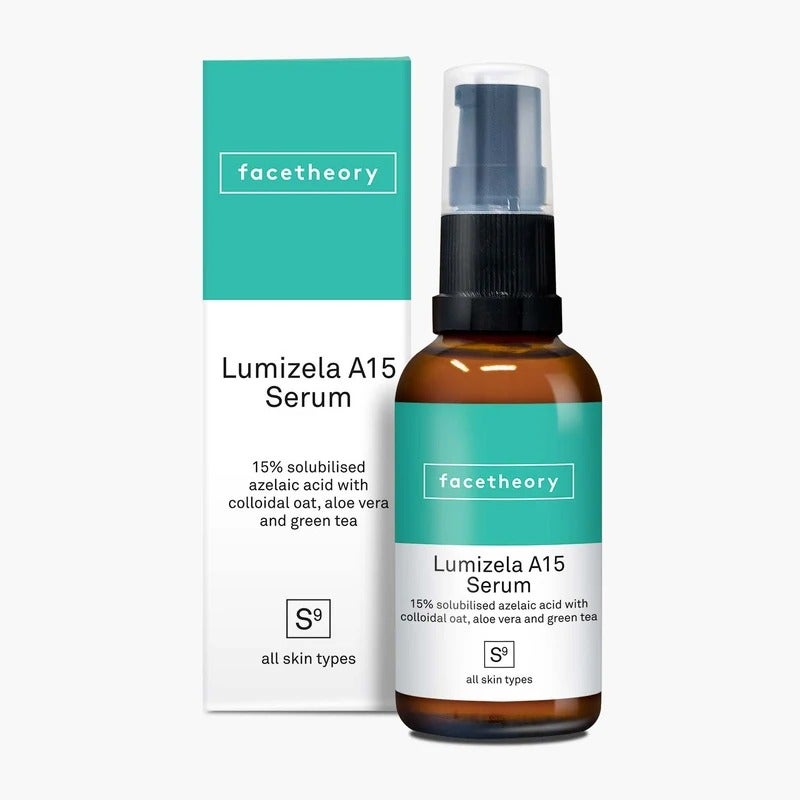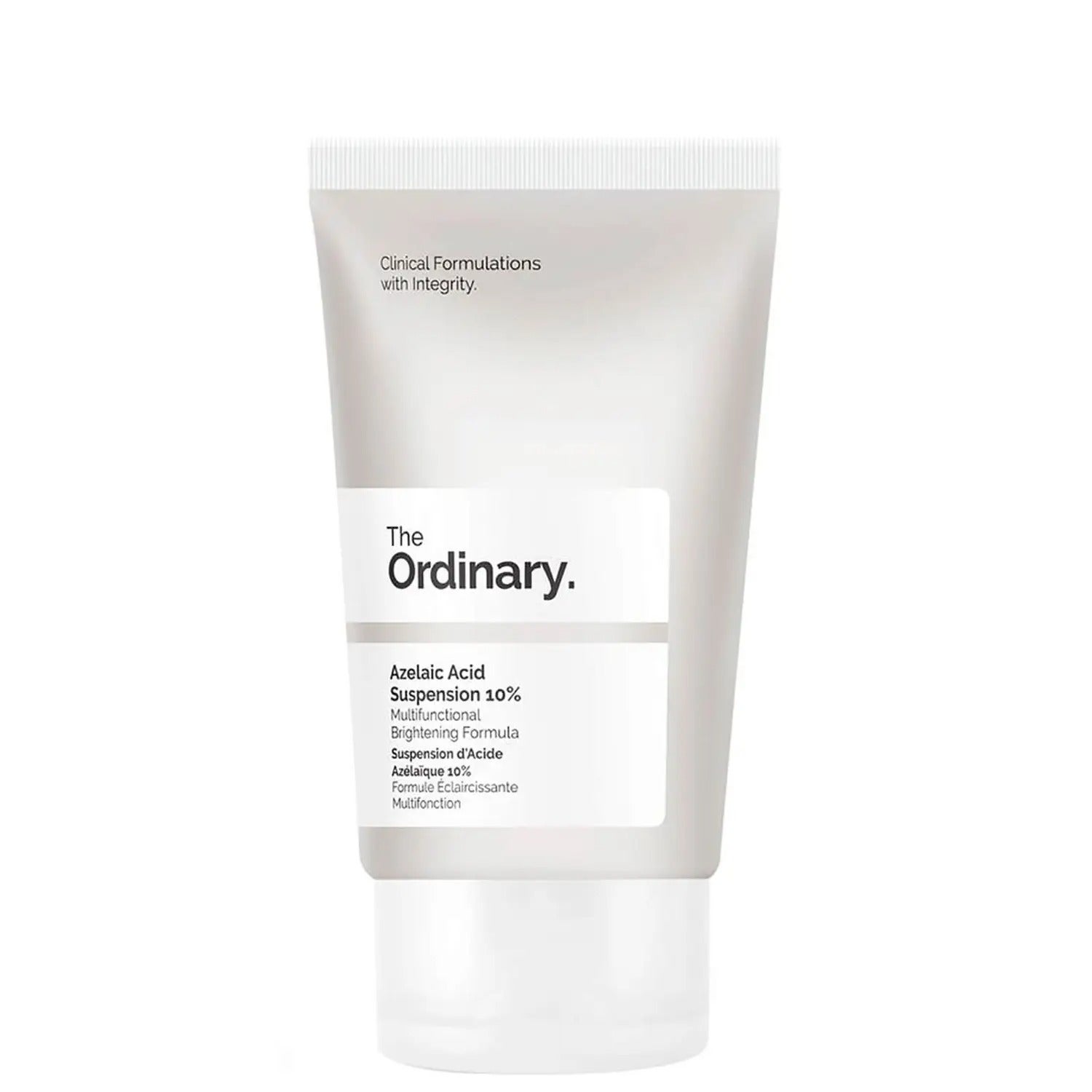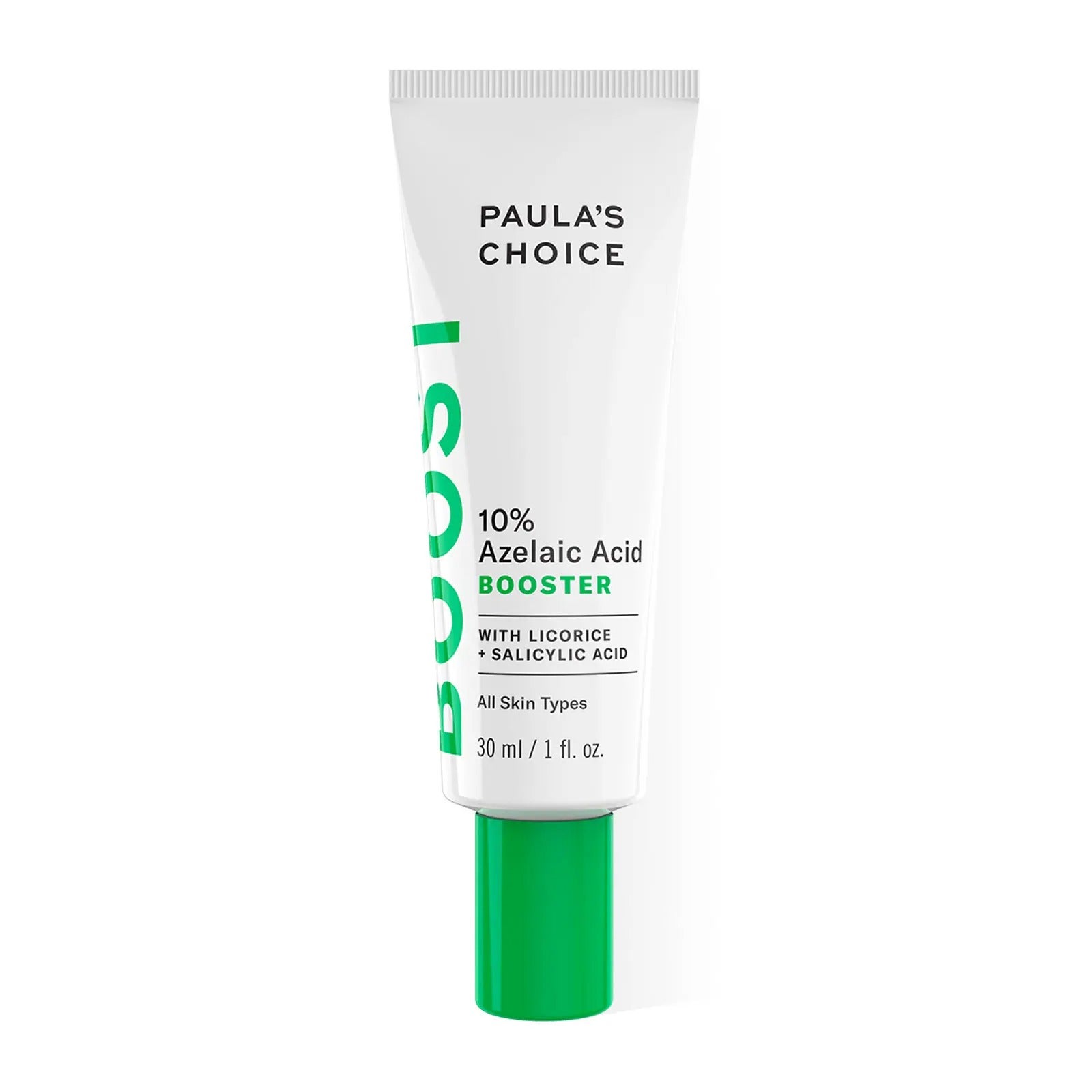When it comes to treating acne breakouts, scars and pigmentation, there are three skincare acids in particular in which we tend to put our trust: glycolic acid (an alpha hydroxy acid (AHA) which exfoliates the upper layers of dead skin cells to minimise breakouts and marks), lactic acid (also an AHA, which works in a similar way to glycolic acid, just with less irritation) and salicylic acid (a beta hydroxy acid (BHA), which penetrates deeper into pores to break down the paste-like mixture of oil and dead skin cells to prevent clogging).
If you have problematic skin, it's likely that at least one of these acids is a staple in your am/pm skincare routine. But what if we were to tell you that there's another dermatologist-approved skincare acid out there which does pretty much all of the above and more? Enter: azelaic acid. Okay, it might not sound that buzz-worthy, but to skin experts, it's an unsung hero when it comes to treating live breakouts and the annoying aftermath, including skin staining and rough skin texture.
AdvertisementADVERTISEMENT
Before we get to the good bit, here's the science. "Azelaic acid is naturally found in grains such as rye and barley," explains consultant dermatologist at Skin 55 and author of The Skincare Bible, Dr Anjali Mahto. "It can also be produced by a yeast that naturally lives on our skin, known as Malassezia furfur. Unlike glycolic and lactic acid which are alpha hydroxy acids, azelaic acid is a dicarboxylic acid." Basically, a natural substance. So what are the benefits of azelaic acid?
"Azelaic acid has anti-inflammatory effects on the skin (reducing redness and swelling in acne-prone skin) in addition to reducing the production of keratin – a protein which can block pores and lead to acne," continues Dr Mahto. "It can also be of benefit for another skin condition known as rosacea. However, one of the key uses of azelaic acid is its ability to even out pigmentation and to improve skin tone. It can therefore also be useful for helping fade some of the marks left behind after acne. It can be used in the morning and evening. You can use it after cleansing and before applying your other layers of skincare."
The best part? According to Dr Mahto, it can be used safely by nearly everyone, and you don't have to visit a dermatologist to get it on prescription. "It can be found in over the counter skincare products (commonly at concentrations of 10%) as well as in prescription-only creams. Personal favourites of mine include The Ordinary 10% Azelaic Acid Suspension, £5.50, and Paula’s Choice Resist Skin Transforming Multi-Correction Treatment, £37. Prescription products available from your GP or dermatologist include Finacea gel (15% azelaic acid) and Skinoren cream (20% azelaic acid)."
As with all acids and other powerful skincare ingredients like retinol, azelaic acid can make your skin more sensitive to UV, so Dr Mahto emphasises the importance of incorporating an SPF into your morning skincare routine. "Azelaic acid is a natural exfoliant and it is important to be using regular SPF on a daily basis," she advises.
Refinery29's selection is purely editorial and independently chosen – we only feature items we love! As part of our business model we do work with affiliates; if you directly purchase something from a link on this article, we may earn a small amount of commission. Transparency is important to us at Refinery29, if you have any questions please reach out to us.


